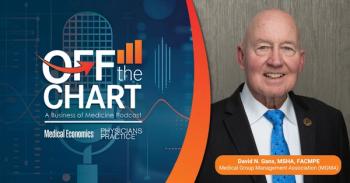
The Dangers of Copy and Paste in the EHR
Copy and paste can speed up patient charting in the EHR, but physicians and staff must be wary of propagating errors. Here are key factors to consider.
By nature of design, EHR systems encourage physician users to copy old patient data, like medication lists and chronic conditions, and copy and paste the information into the current note. In doing so there are benefits and risks for both physicians and patients, according to Lorraine Possanza, DPM, JD, and Robert Giannini, NHA, of the nonprofit
The ECRI Institute's mission is to provide physicians and other health professionals evidence-based guidelines on the most effective medical procedures, devices, and drugs, via scientific research. In order to understand the affect that potentially unsafe practices like "copy and paste" have on patient safety, ECRI applies a three-prong approach, says Possanza. This includes data collection; data analytics; and leveraged learning that reaches out to both EHR vendors and medical staff.
While reporting can seem onerous to overworked staff, it is vital to understand the extent of the problem. Possanza provided conference attendees an example where copy and paste can hinder the physician and her staff as she treats a hospitalized patient who suffers from pressure ulcers. If the initial assessment is copied and pasted forward in the note on subsequent patient visits, the physician does not have a true picture of the progression of the ulcers and may not trust the validity of the information in the note.
Copy and paste also contributes to "note bloat" says Possanza, making it difficult for a physician to pick out pertinent information that is swallowed up by redundant information. It is vital that patient information is accurate, timely, and easily assessable she says, adding that a dense note can contribute to diagnostic error.
The ECRI Institute did a retrospective study on diagnostic error that found 7.4 percent of audited charts contained copy and paste information, and of that group, 36 percent contributed to diagnostic error. "How does copy and paste influence [diagnostic error]? Through note bloat, through those internal inconsistencies, through the propagation of errors," says Possanza. "If I pasted information and it's incorrect and I repeatedly paste that information that is incorrect, I now have errors that are propagated."
In order to minimize the chances of error, Possanza says physicians and other clinicians must be accurate in their notes, concisely document the patient information, attribute where copy and paste material came from, and give context where appropriate.
It is essential that physicians and other medical staff feel that they can report health information technology (HIT) related-errors in a non-punitive environment, so that management can address any systemic problems. And it is also equally important that staff are trained on copy and paste best practices. To that end, the
The Partnership has developed four recommendations for providers and their staff, says Possanza:
- Provide a mechanism to make copy and paste material easily identifiable;
- Ensure that the provenance (and chronology) of copy and paste material is readily available;
- Ensure adequate staff training and education regarding the appropriate and safe use of copy and paste; and
- Ensure that copy and paste practices are regularly monitored, measured, and assessed.
Newsletter
Optimize your practice with the Physicians Practice newsletter, offering management pearls, leadership tips, and business strategies tailored for practice administrators and physicians of any specialty.










